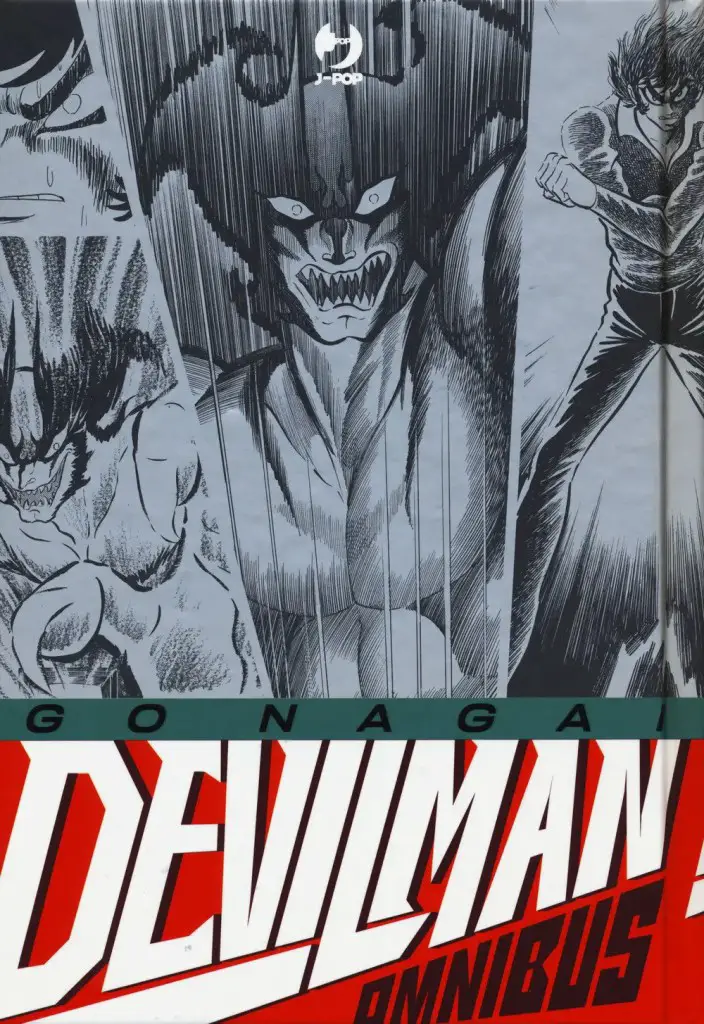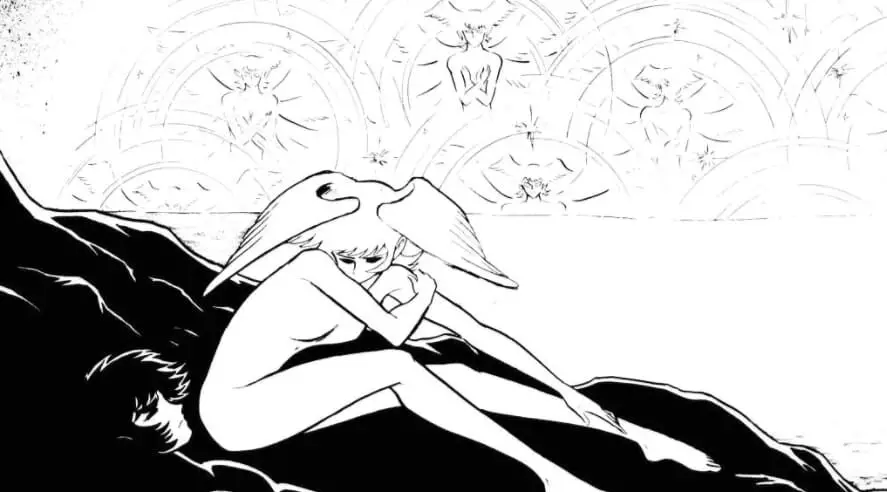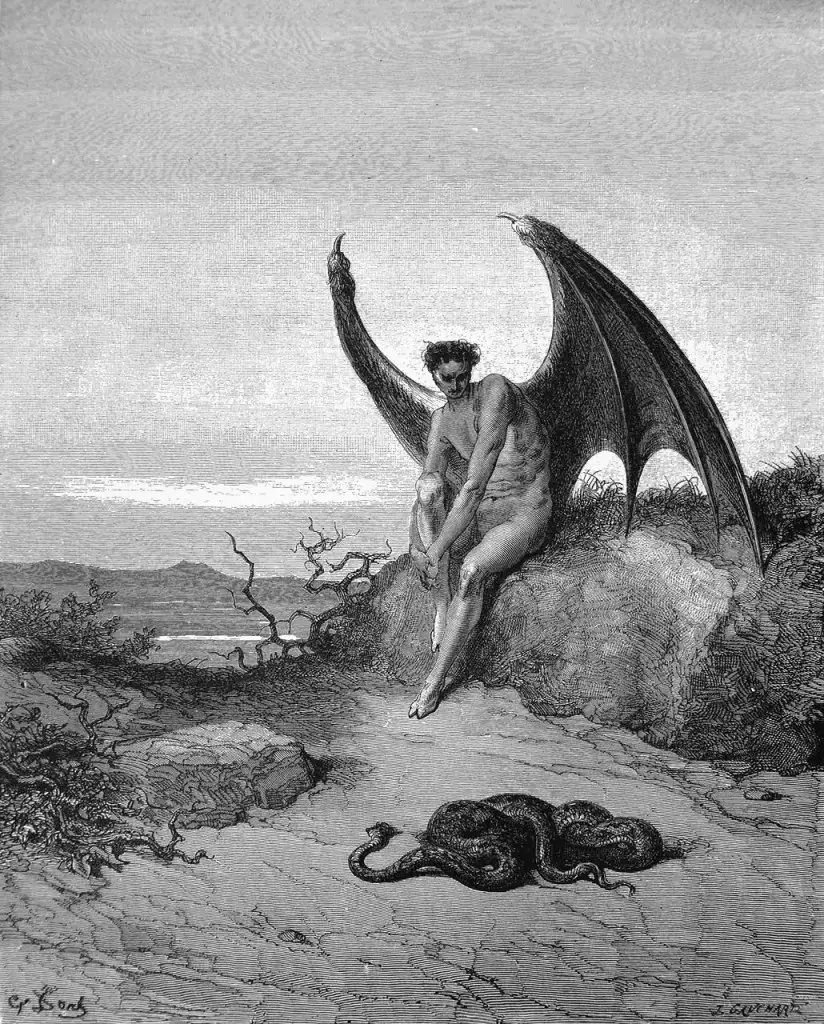Akira Fudo's life is turned upside down by his friend Ryo Asuka when he reveals to him that the Earth is about to be invaded by terrifying demons who, hibernating for centuries in the Antarctic ice, are now about to free themselves from the providential prison to attack the surface. ; demons would have lived on Earth before the appearance of man and now claim ownership. What is it about? Perhaps a Japanese remake of "At the Mountains of Madness" by HP Lovecraft? Not really, even if certain correspondences are undeniable. We are talking about “Devilman”, a pillar of Japanese comics, full of cultured references and a revealing work of the human condition in all its precariousness.
di Lorenzo Pennacchi
Cover: Devilman Poster by Maknaru.
Article originally published on The Dissident Intellectual on January 21, 2018 and herein re-proposed with slight changes
There are works with which a human being should deal, as they are emblematic of a historical period and bearers of such a high value as to make them unique. It is the case of Devilman, realized by one of the most important mangaka ever: Kiyoshi Nagai, aka Gō Nagai. Outstanding innovator of comics and animation, he is the creator of those mechas (from Mazinger a Getter Robots, from Jeeg Robot steel a Ufo Robot Grendizer) that have shaped entire generations and continue to be adapted in new versions. Also thanks to the publishing house he founded, Dynamic Production, his works have traveled the world, constituting a series of universal myths.

Devilman was released in June 1972, but its story began the previous year with the release of Mao Dante Alighieri, his spiritual father. The unfinished work reveals the author's religious interest and his debt to European culture. In a 2007 interview Nagai stated how the productions in question are strongly influenced by the edition of the Divine Comedy illustrated by Gustave Doré (which, remember, the same Lovecraft taken as a model of inspiration for the creation of certain of his abominations and atmospheres). In the brief speech released on the occasion of Devilman's 45th anniversary, he reiterated:
I've always loved classical mythology, ever since I was a child. I also love Michelangelo, Leonardo and all Renaissance painting. Dante's Divine Comedy also influenced me a lot and I have always loved Italian cinema. Therefore, I believe that the Italian culture has influenced me even more than the Japanese one. If, with my work, I have really managed to influence many Italian artists, I can only be extremely happy, because in the same way Italian culture has had a strong impact on the creation of my works.
Devilman is the story of Akira Fudo, a shy Japanese student, convinced by his friend Ryo Asuka to merge with a demonic entity to fight the non-human demons awakened on Earth. Said like this it might seem like a antics or at best a terrifying story for children. Undoubtedly at the beginning, removed the very first pages that show how the clash has millennial origins, Devilman has markedly childish features. Going forward in the reading, we understand how this is a further strength: Gō Nagai's ability to slowly change the thickness of the work, to the point of giving it a total aura, is exceptional.

One of the main themes is certainly the evolution of its protagonist, not at all linear as the beginning might suggest. Convinced by Ryo Asuka to become a devilman, Akira Fudo joins Amon, the most powerful of the demons, during a sabbath. The ritual evokes the generation of the Dionysian described in the first chapter of Birth of the tragedy, In which Nietzsche he refers to the loss of the principle of individuation, through intoxication: «That's right! - says Ryo - when humans renounce reason, acting only on instinct, demons and humans can merge!».
From this moment on Akira, changed both physically and spiritually, lives a constant tension, aimed at keeping his human part under control, not allowing the demonic spirit to corrupt it completely. He became the first devilman conscious, ready to defend humans from demons. This awareness leads him to collide with monstrous creatures, to undertake space-time travel, sacrificing himself for the salvation of humanity, until he feels betrayed by the same species he thought he had to defend. The process of this mistrust is long, but the apogee is represented by the death of his beloved, Miki Makimura, at the hands of men. Accused of being a supporting witch of demonic creatures, her impaled head is found by Akira, who whispers in her tears:
I have nothing left now. Neither will to live nor joy. Life has no meaning anymore! I have nothing to defend, however, Ryo Asuka, indeed, supreme demon Satan, I cannot help but fight you! But it won't be a fight to defend humans! I want to find out who will be the last to stay on Earth! The demons or the devilman? I challenge you Satan!

It is a radical change of perspective, which introduces the tragic epilogue. But how Is Ryo Asuka Satan? Hadn't he been the one who convinced Akira to fight the demons? Initially Ryo is a mysterious boy who recently lost his father, an archaeologist who discovered the truth about demons and died after transforming into one of them. Through paternal studies Asuka reveals to Akira how the demons are primordial beings, who have merged with animal and plant species to survive, but apparently extinct due to the glaciations. Due to their imminent return Ryo transports his friend into the vortex already described, embodying the role of spiritual guide, a modern Virgil.
With the passing of events, however, various thoughts and hints suggest that this is not the case: Ryo Asuka is the incarnation of Satan, the superior demon, slowly awakened in his body. Akira is nothing more than a victim, the greatest expedient to throw humanity into chaos. Having prevailed in the final confrontation, twenty years after the complete extinction of human beings, Ryo-Satan finds himself talking side by side with Akira-Devilman:
The Moon, how beautiful. Akira… only the moon hasn't changed from millions of years ago. And to think that the Earth was more beautiful than the Moon. This microcosm was created by my parents, those you call God. They infused life into this microcosm […] I fought against God alongside the demons, as you fought to protect human beings. I did it to protect the demons and the Earth, their Planet. And in the end we won. To prepare for God's next attack, we fell asleep for two million years […] Once I awoke from sleep, the Earth had changed. This once magnificent Planet had been soiled ... by new living beings called "humans". I could not forgive the human beings who had tainted the land that I defended at the cost of my life! I decided that I would annihilate them. But that was exactly what God tried to do with the demons. Those who are strong should not have the right to take advantage of weaker beings by virtue of their own power alone. Forgive me, Akira, I've been a fool.
After saying these words he turns around and sees that Akira Fudo's body is cut in half. Satan, who has just declared his repentance, weeps.

In this ending, among the best in the history of comics, are contained various themes previously addressed. First of all, the motives of the demons. Far from describing a dichotomous clash between good and evil, Gō Nagai highlights the characteristics of the different factions in conflict, with their positive and negative sides. The result is that no one comes out the winner: after having purged the Earth of the burden of humans, Ryo seeks understanding and forgiveness. Then the reflection on humanity itself, which essentially resides in the recognition of fear as an essential drive of the human spirit, generator of insecurity and hatred. As in a modern Hobbesian state of nature, it is fear that pits man against his fellows to carry out ridiculous persecutions and unspeakable crimes. After all Devilman he is also a child of the cold war. As the author recently revealed, around that time:
Even in Japan there was a spread of student movements against the government, violent demonstrations and even terrorist acts. Anxiety was rampant and the fear that an escalation could lead to a new war was spread across society. I thought that, telling how dangerous a war drift could become, with Devilman at the end of the world, my work could have been a kind of alarm bell for the future.
In the course of the work i references to Western history and culture they grow out of all proportion. Not only Dante Alighieri and the Christian substratum, but also Giovanna D'Arco, ancient Greece, the French Revolution and even Hitler these are all elements that are part of the narrative, in those space-time journeys of the protagonists that give breath to the unfolding of the plot. Even the secondary characters deserve a mention: from the beautiful Sirène, to her companion Kaim, from the terrible Jinmen to General Zan, to little Tare Makimura and her friend Susumu, murdered by his family in demonic form. Everything is represented by a decisive, marked, uncompromising trait, decisive for the historical evolution of Japanese comics.

A few months after its release, Devilman became a anime with decidedly more childish characteristics than the work on paper. But even in this case he entered the imagination of millions of fans. Later, in the course of his life Gō Nagai returned several times to the universe of the devil man. The latest creation is the anime Devilman Crybaby by Masaaki Yuasa produced by Netflix in 2018. It is a free adaptation set in our days. The innovative elements reside in the pre-eminent role attributed to the media, the greater dynamism conferred on female roles, the introduction of new characters and the understandable cut of some parts (such as the travels of the protagonists). It is a pleasant vision, at times courageous, but still quite faithful to the original. And it should be so: Devilman it is a universal myth, it must not be forgotten.
